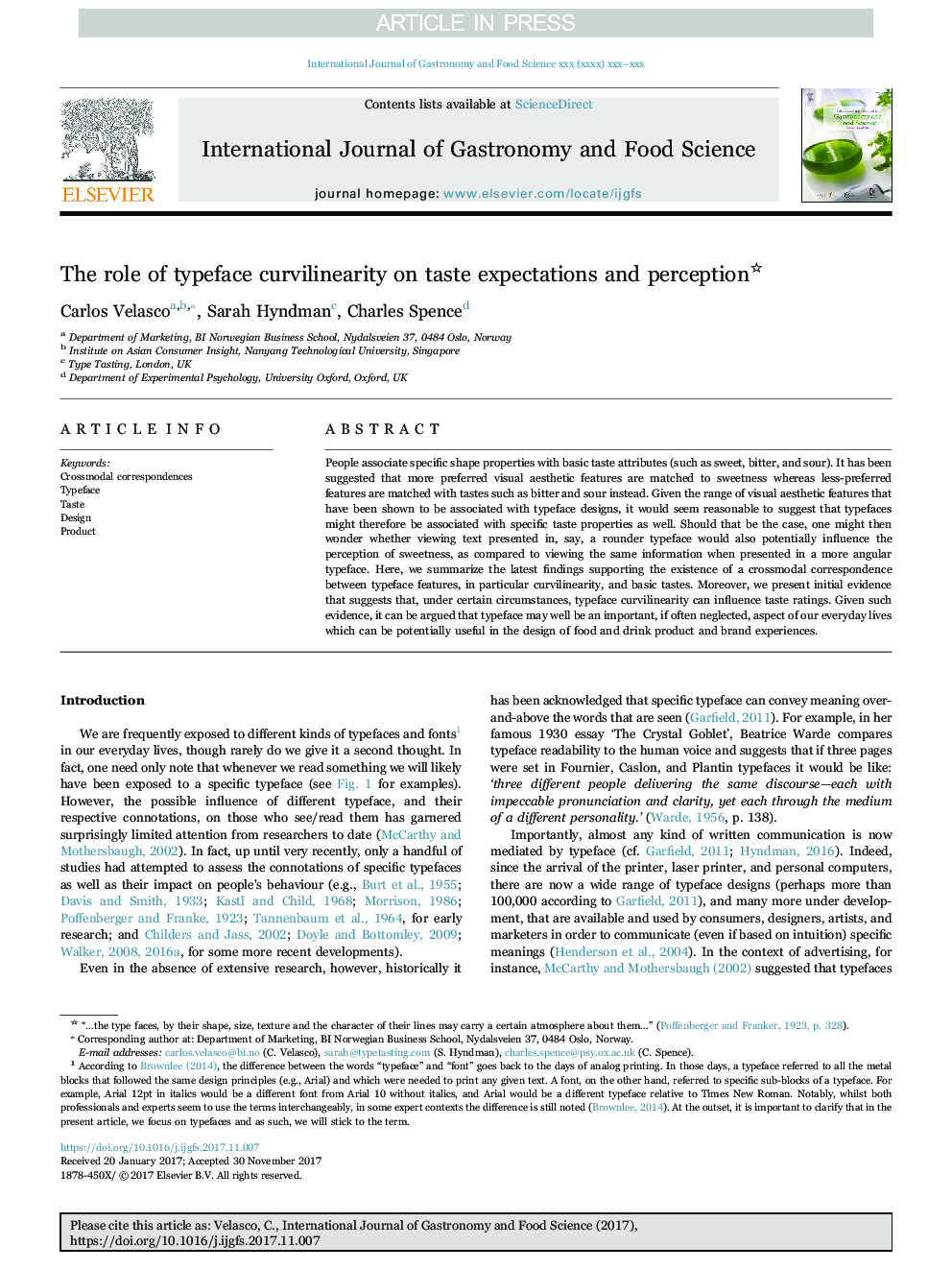| Article ID | Journal | Published Year | Pages | File Type |
|---|---|---|---|---|
| 7535000 | International Journal of Gastronomy and Food Science | 2018 | 12 Pages |
Abstract
People associate specific shape properties with basic taste attributes (such as sweet, bitter, and sour). It has been suggested that more preferred visual aesthetic features are matched to sweetness whereas less-preferred features are matched with tastes such as bitter and sour instead. Given the range of visual aesthetic features that have been shown to be associated with typeface designs, it would seem reasonable to suggest that typefaces might therefore be associated with specific taste properties as well. Should that be the case, one might then wonder whether viewing text presented in, say, a rounder typeface would also potentially influence the perception of sweetness, as compared to viewing the same information when presented in a more angular typeface. Here, we summarize the latest findings supporting the existence of a crossmodal correspondence between typeface features, in particular curvilinearity, and basic tastes. Moreover, we present initial evidence that suggests that, under certain circumstances, typeface curvilinearity can influence taste ratings. Given such evidence, it can be argued that typeface may well be an important, if often neglected, aspect of our everyday lives which can be potentially useful in the design of food and drink product and brand experiences.
Related Topics
Life Sciences
Agricultural and Biological Sciences
Agricultural and Biological Sciences (General)
Authors
Carlos Velasco, Sarah Hyndman, Charles Spence,
